Common Wasp Moth - Eressa angustipenna
Family Arctiidae
This page contains pictures and information about Common Wasp Moths that we found in the Brisbane area, Queensland, Australia.

- Wingspan 30mm
- This moth is common in Brisbane bushes. We easily find them resting or flying openly in the Eucalyptus forest during warm season. They like to rest on green leaf in shaded area during the day.
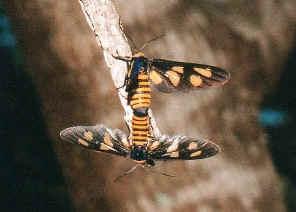

- The about pictures show different mating couples. We found them spend quite a long time in mating. One thing interesting is that most of their pictures, from reference books or other web sites, showing they are mating. This is not the case for other moth species.

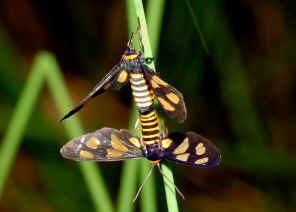

- Male and female looked very similar. We do not know much about the caterpillars and their life-cycle. We did not find any information on reference books nor on internet.
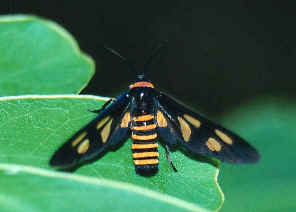

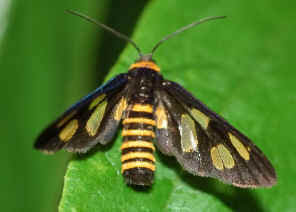
- This moth looks like a wasp when it is flying. Its wings are black with translucent yellow-orange spots. It has black and orange-yellow bands on its body. There is the orange band between its black head and black hairy thorax.
-
- The wing patterns and colours are slightly different between individuals.
-
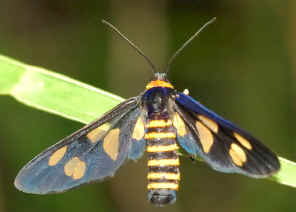
- When we talking the above photos, the Tiger Moth tried very hard to convince us that it is a wasp, opened its wings, dancing around and waving its banded abdomen.
-



- In Brisbane we found a number of species in subfamily Ctenuchinae. All of them have the very similar wing patterns. We believed they formed the Mullerian mimicry complex.
-
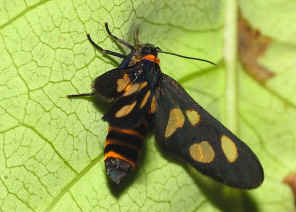

- For this species, both male and female have the filiform antennae (not feather like).
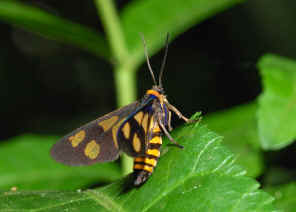
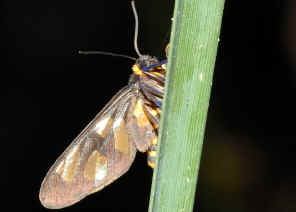
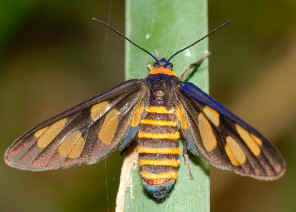
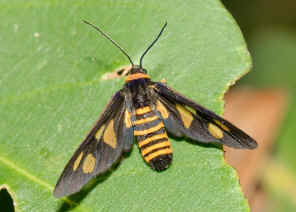
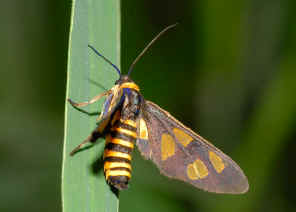

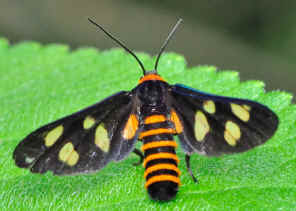
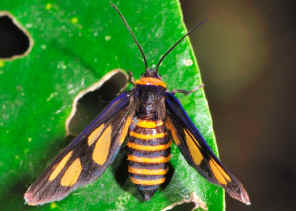
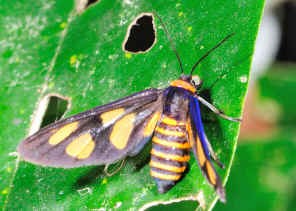
- The moths rest with wings wide open. The patterns on wings are slightly different between each individual.
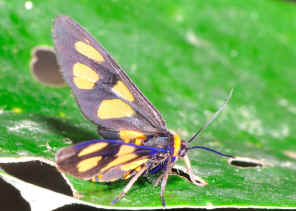


- Their abdomen are banded with black and orange colours, mimicking wasp. This is the warning colours of they are poisonous or distasteful if eaten. Their fore-wings are relatively long and narrow with small round hindwings.
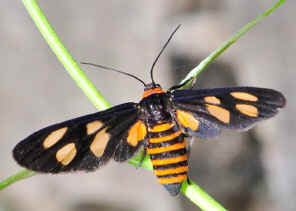

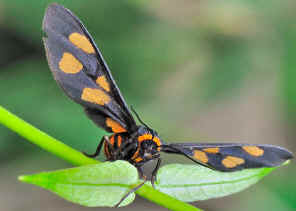
- Moths in subfamily Ctenuchinae looked very similar. It is believed that they mimic each other and form a mimicry complex.
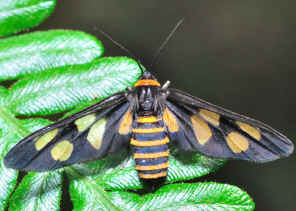
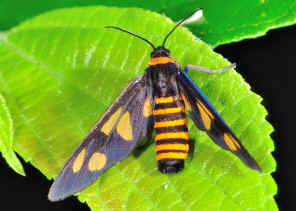
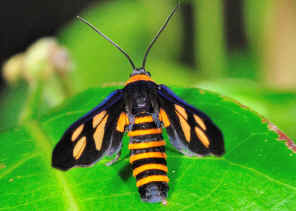
- This is why we have so many of their photos in this page. It is almost impossible to distinguished them in the field. Most of them are the common species but occasionally there are the rare one. The only thing we can do is to take photos of all found and check them carefully via the computer screen. We may still find an odd one in this page.

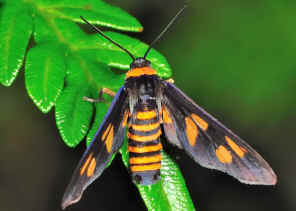

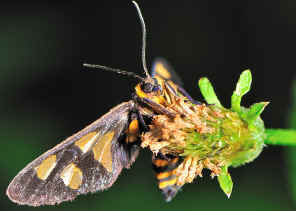
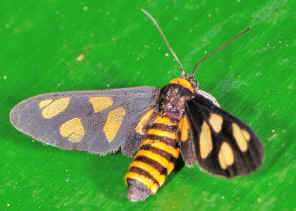
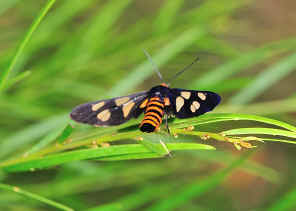
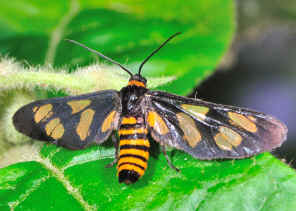
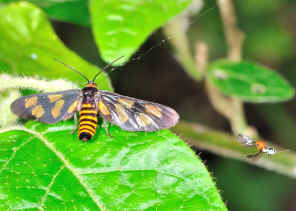


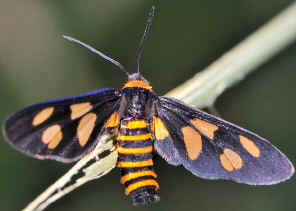

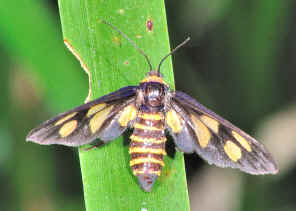

- Reference:
- 1. Moths - family Arctiidae - lifeunseen.com by Nick Monaghan, 2007
- 2. Eressa angustipenna - Australian Caterpillars by Don Herbison-Evans & Stella Crossley, 2007
- 3. Moths
of Australia - I. F. B. Common, Melbourne University Press,
1990, p439,
Fig44.4.
